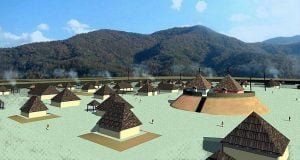Woodland Period
Early Woodland Period (1000 BC – 200 BC) In the Mid-Atlantic region, the Early Woodland Period is believed to have been a continuation of Late Archaic traditions. Native peoples slowly became more sophisticated in adapting to their environment. Population slowly increased. There were steadily more trade contacts between regions. An important trade route connecting the North Georgia Mountains and Tennessee River Valley with the Potomac River Valley passed through the Shenandoah Valley. It intersected major east-west trade routes at Harpers Ferry, WV and Roanoke, VA, where the James River passes through the Blue Ridge Mountains. At least as early as … Read more



